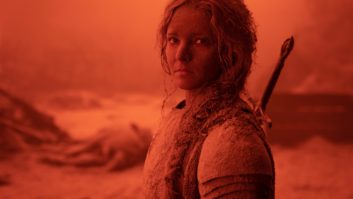Having started out as a short film, followed by a feature, Boiling Point makes its debut as a four-part TV series on BBC One on Sunday 1st October.
The plot follows the staff of a restaurant in East London, with the TV series set eight months after the 2021 film.
Head chef Carly (Vinette Robinson) is battling to forge a name for new Dalston restaurant Point North alongside her old kitchen crew, while her former boss Andy (Stephen Graham) is coming to terms with the events of the film.
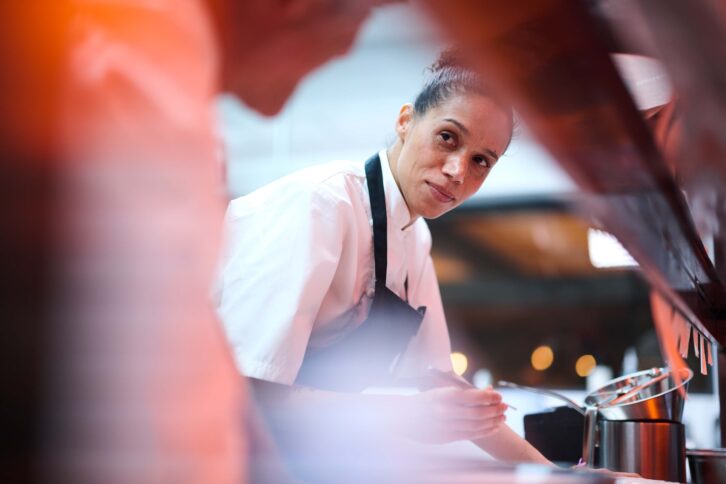
As well as many of the actors following the project through its different iterations, a large part of the behind-the-scenes team has also been involved with Boiling Point since the short film, including editor Alex Fountain.
He was working with director Philip Barantini on another short film when the idea of Boiling Point first began. “Philip decided that we’d first do it as a short film, given that the short film format is relatively low stakes,” explains Fountain. “Because he did well on that, Philip then managed to do his first feature. And then after that, the next obvious thing was the Boiling Point feature. Because I’d worked with Philip on those three projects, I ended up being the obvious choice as the editor.”
From short to feature
The 2019 short film was 19 minutes long, which Fountain says meant it wasn’t technically difficult. “I was doing more of the job of an assistant editor in the sense that I was kind of a middleman between departments and then spent a long time rendering out versions of it for people to watch.”
As part of the process, Fountain was able to spend time on set working alongside Barantini and cinematographer Matthew Lewis. That meant he could watch each take and make suggestions that would help during the edit. “I’d say, if I were cutting this sequence, I might actually want an insert shot here because it tells the story better,” he explains. “If they thought that was something that they wanted they would work out how to get the camera there.”
As the team moved onto the 90-minute feature, the technical challenges became more extreme, says Fountain. The film was shot on a Sony Venice, which led to the recording being split across three cards. “Once the A card on the camera was full up, we would then start recording on the B card. So the team had to take out the A card and put it in a third card whilst shooting,” he continues. “We had to test whether that was possible, and then we had to work out whether we were going to do that in a take and things like that.”
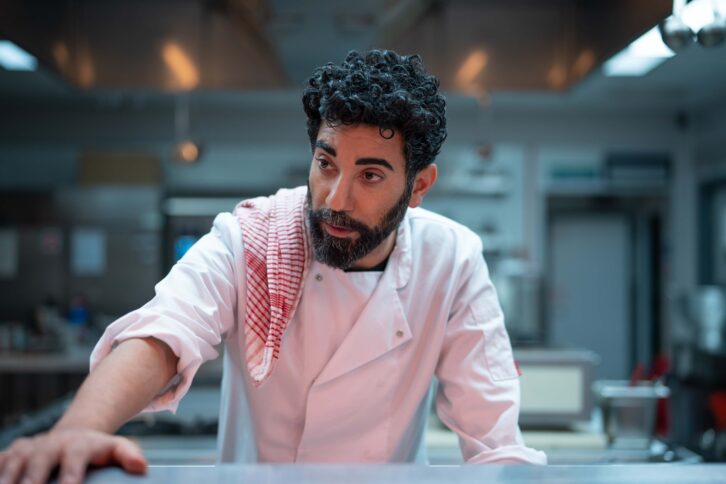
One of the biggest challenges of the feature was that it was filmed as one shot, meaning that for the initial assembly, Fountain was able to stick the footage from the three cards together. “But there was so much else on top of that because in order to get a watchable film out of that was quite tricky. We had about 50-something mic-ed actors and extras. I’ve never had an edit that looked quite like that before, one video track, and then 60-something audio tracks, and it was quite novel.”
A good production team plans for any eventuality, but no one could have foreseen the pandemic hitting the project. The UK’s first lockdown cut the shoot in half, which led to debate over which take was the best, says Fountain. “Ultimately, we went with what the core team deemed were the performances we wanted. But on my side, there were technical questions as well, because they all had various flaws, like focus problems or VFX issues. Sometimes we’d have issues that people would only spot a week later, like if a person left a bag in the back of a shot, and fiddly things like that, which ended up making it a little bit more challenging.”
Lockdown also meant the post production process had to be done remotely. Fountain cut the feature in DaVinci Resolve, and uploaded sequences for the director and producers to view on his personal Vimeo account. “Now, things are a lot more remote-friendly. I’m working on shows where most of the editing is remote and we’ll have Frame.IO and other systems that allow us to work remotely with the director. But back then, we weren’t really aware of how useful these things were. So the only thing I could think to do was upload stuff to Vimeo,” he explains.
From feature to TV
The feature version of Boiling Point was released in the UK in January 2022 to critical acclaim, receiving four British Academy Film Awards nominations. Then in the following October, the BBC announced the commission of the four-part sequel.
Fountain returned to the project at the request of Barantini as they had worked together once again on ITV’s Malpractice. “We had the same core edit team, same director, same DoP and we took what we learned from that series and combined it, plus the rogue element of Boiling Point where you kind of do things in a slightly indie way.” He adds that the TV series retains the independent spirit of both of its predecessors.
He also shared editing duties with Tommy Boulding. Fountain cut episodes one and three, while Boulding worked on two and four.
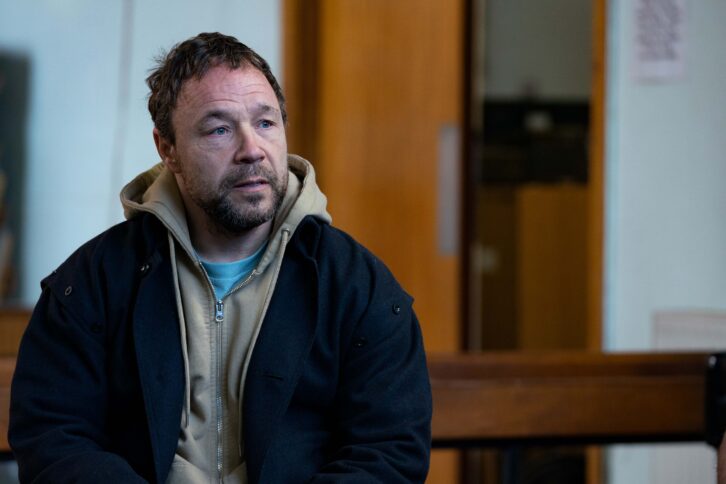
One of the big differences of the TV series is that it’s been edited using Avid’s technology. “We were delivering to a post house that works with Avid,” explains Fountain. “We usually have a post production supervisor, and they tend to want to pick a safe option, which is all totally fair enough.”
However, Fountain went back to Resolve to work on shots involving visual effects. “I wish Avid was better at allowing me to do temp work very quickly, and have it in a timeline,” he says. “With Resolve, I can just do all those things very, very easily. So what I ended up doing was taking some stuff into Resolve, and then making a VFX edit in that, and then bringing that back into Avid, which was not the smoothest process, because I don’t think the two of them are made to work together.
“For example, if there was a scene where there needed to be a big fire in a pan in the kitchen, some of the fire element might be VFX, and so I would bring that into Resolve and combine the real fire with some VFX that I added in, which is super easy to do.”
Fountain says the other big challenge of working on the TV series is that much of it is improvised. “It’s a challenge that most of the time is quite enjoyable,” he adds. “The feature was semi-improvised in workshops for two weeks before we shot. The series didn’t have as much workshopping time, but it was kind of done in a similar way. The actors will improv around the scripts or just on the day decide that the character may say something different. They’ve worked that it out Phil and with our other director Mounia Akl, and most of the time that works out great.
“What it means in the edit is that you’ve got a lot of choices, but on the other hand, you’ve got a lot of limitations. With Boiling Point, if I pick one line reading, then it might not connect with an earlier bit, so I have to look for a different take. It was a much more complex jigsaw puzzle than anything else that I’ve edited before because of the level of improv.”
Finally, asked about his favourite sequences in the TV series, Fountain says there are two – and attempts to explain them without revealing any spoilers. “We have an episode where two of the characters go on what I’m going to call a side quest, where they’re taken out of the kitchen, and they have their own journey together.
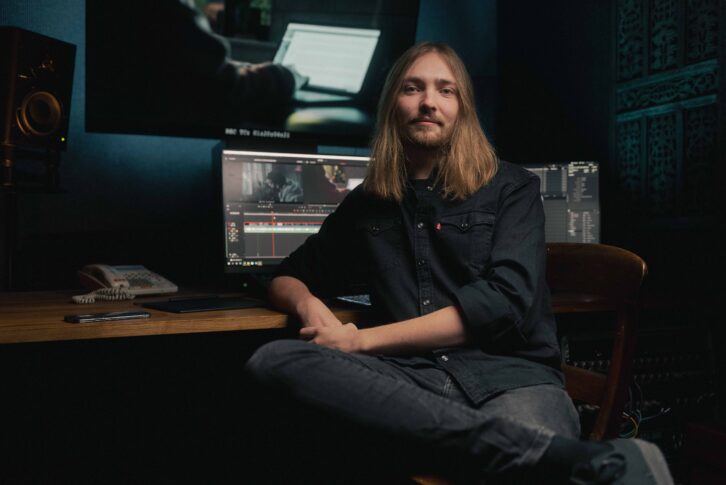
“That involves a lot of tense energy that’s more similar to other work I’ve done before, like The Responder. Taking people out of the kitchen and putting them in a very Boiling Point-like situation was quite fun. And for me, that kind of broke up the edit a little bit as well. We’re getting out of the kitchen, where people are just shouting each other, and we’re doing something kind of nonverbal where it’s all done through looks between characters and things like that.
He continues: “More generally, I’m proud that we’ve managed to take the kitchen energy that’s in the feature and translate that into something where we were cutting more conventionally. There are little elements of one takes here and there, and there is a substantial one take in the show. But what we’ve managed to do is edit in a way that reflects the style of Boiling Point. All of the chaotic cooking scenes, or people shouting at each other in the kitchen. It took quite a while to find the rhythms in the edit that replicated that feeling. But I think we’ve done that quite well.”
Boiling Point debuts at 9pm on BBC One and iPlayer on 1st October.






